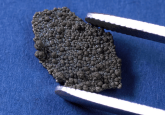Top news in tech!

- New wireless biosensor chip with increased sensitivity
- Novel patch could increase sensitivty of fluorescence-based diagnostic testing
New wireless biosensor chip with increased sensitivity
Naamah Maundrell (Future Science Group)
The study, published in Advanced Materials, describes a newly developed portable biosensor utilized for the detection of genetic markers. The cheaper and faster biosensor chip could identify single nucleotide polymorphisms, some of which are associated with an increased risk of disease.
Current detection methods use non-wireless bulky instruments, which have reduced sensitivity and specificity. The new biosensor, developed by a team at the University of California San Diego (CA, USA), could be able to detect single nucleotide polymorphisms in picomolar concentrations.
Ratnesh Lal, professor of bioengineering (University of California San Diego), commented: “Miniaturized chip-based electrical detection of DNA could enable in-field and on-demand detection of specific DNA sequences and polymorphisms for timely diagnosis or prognosis of pending health crises, including viral and bacterial infection-based epidemics.”
The biosensor chip captures DNA with the single nucleotide polymorphism and then produces a wireless signal that is sent to a mobile device. The team now hope to build on this research to design a chip that could detect various single nucleotide polymorphisms in one test.
Sources: Hwang MT, Wang Z, Ping J et al. DNA nanotweezers and graphene transistor enable label‐free genotyping. Adv. Mater. doi:10.1002/adma.201802440 (2018); www.eurekalert.org/pub_releases/2018-07/uoc–bcd070918.php
♦
Novel patch could increase sensitivity of fluorescence-based diagnostic testing
Rhiannon Finnie (Future Science Group)
A multidisciplinary team from the Washington University in St. Louis (MO, USA) and the Air Force Research Laboratory at Wright-Patterson Air Force Base (OH, USA) have recently developed an ‘add-on plasmonic patch’ designed to increase fluorescence intensity in fluorescence-based biosensing and bioimaging technologies used for diagnostic testing.
Fluorescence-based biosensing and bioimaging technologies are widely used in research and clinical settings but, while convenient to use, they suffer from poor sensitivity. For example, when a patient carries low levels of antigens in the blood or urine, the fluorescent signal from the test can be weak, making visualization and diagnosis difficult.
The team, led by Srikanth Singamaneni (Washington University in St. Louis), recently described their cost-effective solution to this problem in Light: Science and Applications. Their patch is made of a flexible film, approximately one centimeter square, and is embedded with metal nanostructures that increase fluorescence intensity by 100 times. To use, the researcher or lab tech prepares the sample they wish to analyze, applies the patch over the top and scans as usual.
Jingyi Luan, graduate student in the Singamaneni Lab and primary author of the article, explained: “These nanostructures act as antennae: they concentrate light into a tiny volume around the molecules emitting fluorescence. The fluorescence is dramatic, making it easier to visualize. The patch can be imagined to be a magnifying glass for the light.”
Singamaneni concluded by explaining that the patch could be particularly useful in a microarray, which enables simultaneous detection of tens to hundreds of analytes in one a single experiment.
Sources: Luan J, Morrissey JJ, Wang Z et al. Add-on plasmonic patch as a universal fluorescence enhancer. Light Sci. Appl. 7(29) (2018); www.eurekalert.org/pub_releases/2018-07/wuis-npb070918.php



